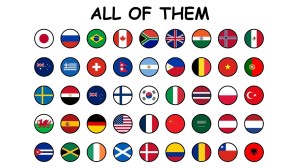In an informative TED Ed lesson animated by Petya Zlateva , Indiana science teacher Kate Slabosky explains how, despite all the things that all mammals have in common, there are three vastly different ways in which they give birth to their young – placental (human, cat, dog), marsupial(kangaroo, koala, wallaby) and monotreme (duck-billed platypus, spiny anteaters)
All mammals are vertebrates, meaning they have backbones. But mammals are distinguished from other vertebrates by a number of shared features. That includes warm blood, body hair or fur, the ability to breathe using lungs, and nourishing their young with milk. But despite these similarities, these creatures also have many biological differences, and one of the most remarkable is how they give birth.
Thanks @TED_ED for helping make my idea for this video about mammalian birth a reality! https://t.co/u9pyB8BopP
— Kate Slabosky (@slaboskyscience) April 18, 2017






